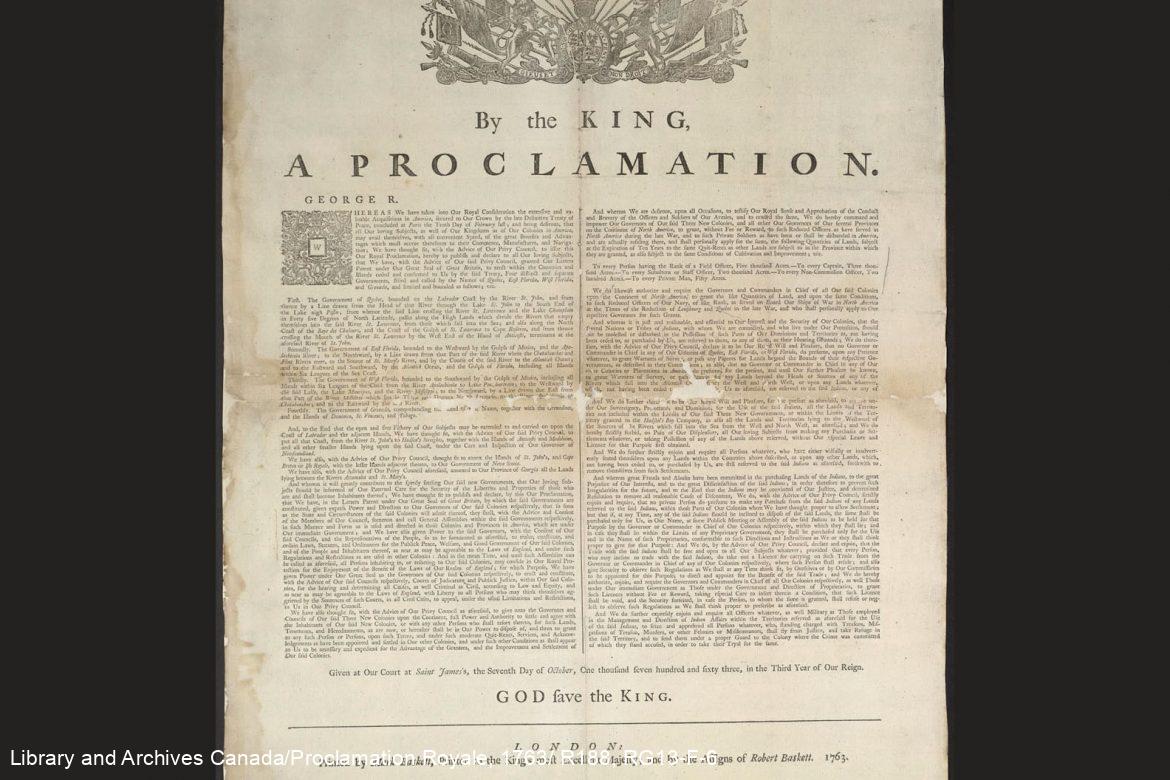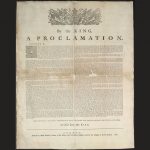1763
The Royal Proclamation of 1763
King George III’s Royal Proclamation of 1763 is the legal foundation for all treaties and land claim agreements with Indigenous people in British North American territories. The Proclamation was written to stabilize the authority of the British Crown after the end of the Seven Years’ war. Large tracks of the continent moved to British control with Indigenous entitlement to the land acknowledged but not clearly stated in the document.
The proclamation was created with no input from the Indigenous people who were impacted. The question of sovereignty and land ownership, so crucial to the new colonial operations in London, had little connection to Indigenous worldviews.
The Proclamation “claimed sovereignty over territory previously occupied by the French, reserving territory and hunting grounds lying west of rivers draining into the Atlantic to ‘Indian Nations.'” It established a policy for acquiring lands occupied by these Indigenous peoples stating that they “could sell their aboriginal interests in the land at a public meeting convened for that purpose…[but]…only the Crown could purchase land from Indians, a provision preventing land sales to private individuals or purchases by other governments.”
The land in question did not include the area King Charles II awarded the “Company of Adventurers” in 1670. Here, a British parliamentary charter granted all the lands and seas of the Hudson Bay and (most importantly) the drainage system into the Bay, called Rupert’s Land, to The Hudson’s Bay Company (HBC). The HBC promptly set up posts and worked to control the flow of furs, especially beaver pelts, outward from her northern shipping factories. The control of Rupert’s Land by a business enterprise complicated the creation of Canada. When the HBC sold its land interests in 1870, the Government of Canada adopted the broad policies established by this Proclamation.
Canada expanded into the newly renamed North-West Territories in 1870. As stated in the Proclamation, the colonial government’s duty was to compensate Indigenous peoples for their interests through a treaty and scrip process. The intent was to extinguish ‘aboriginal title’ to allow for unimpeded access to settlement and resource development. The creation of the provinces of Manitoba in1872, and Alberta and Saskatchewan in 1905 shrunk the North-West Territories into a land north and west of central Canada. At this time, Canada also dropped the hyphen from the name, giving it its current form. Still, the influence of the Proclamation continued to guide government policy in Treaty negotiations. Disagreement over how Indigenous signatories understood Treaties underlies the modern land claim and self-government agreements to this day.

